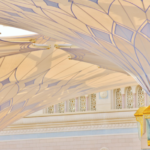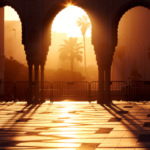Introduction
Arabic calligraphy is more than just writing—it’s an art form that intertwines aesthetics with spirituality. This beautiful tradition has evolved over centuries, reflecting the depth of Arab culture and its reverence for the written word. Let’s explore how Arabic calligraphy has become a symbol of cultural pride and artistic expression.
A Historical Overview
Arabic calligraphy dates back to the 7th century, blossoming during the Islamic Golden Age. Initially used for religious texts, it quickly transcended its utilitarian purpose to become a revered art form. The development of different styles, such as Kufic and Naskh, illustrates the evolution of this art form and its role in both sacred and secular contexts.
The Artistic Techniques
Calligraphy involves intricate techniques that require years of practice. Artists use specialized tools like the qalam (pen) and ink to create beautifully curved and flowing letters. Each stroke and swirl not only forms letters but also conveys emotion and meaning, turning text into visual poetry.
Modern Interpretations
Today, Arabic calligraphy is not confined to traditional media. Artists are experimenting with modern materials and methods, incorporating calligraphy into contemporary art, design, and fashion. This blend of tradition and modernity showcases the enduring relevance of calligraphy in the Arab world and beyond.
Conclusion
Arabic calligraphy is a testament to the rich artistic heritage of the Arab world. By appreciating and supporting this art form, we honor a tradition that bridges the past with the present, blending beauty with meaning in every stroke


